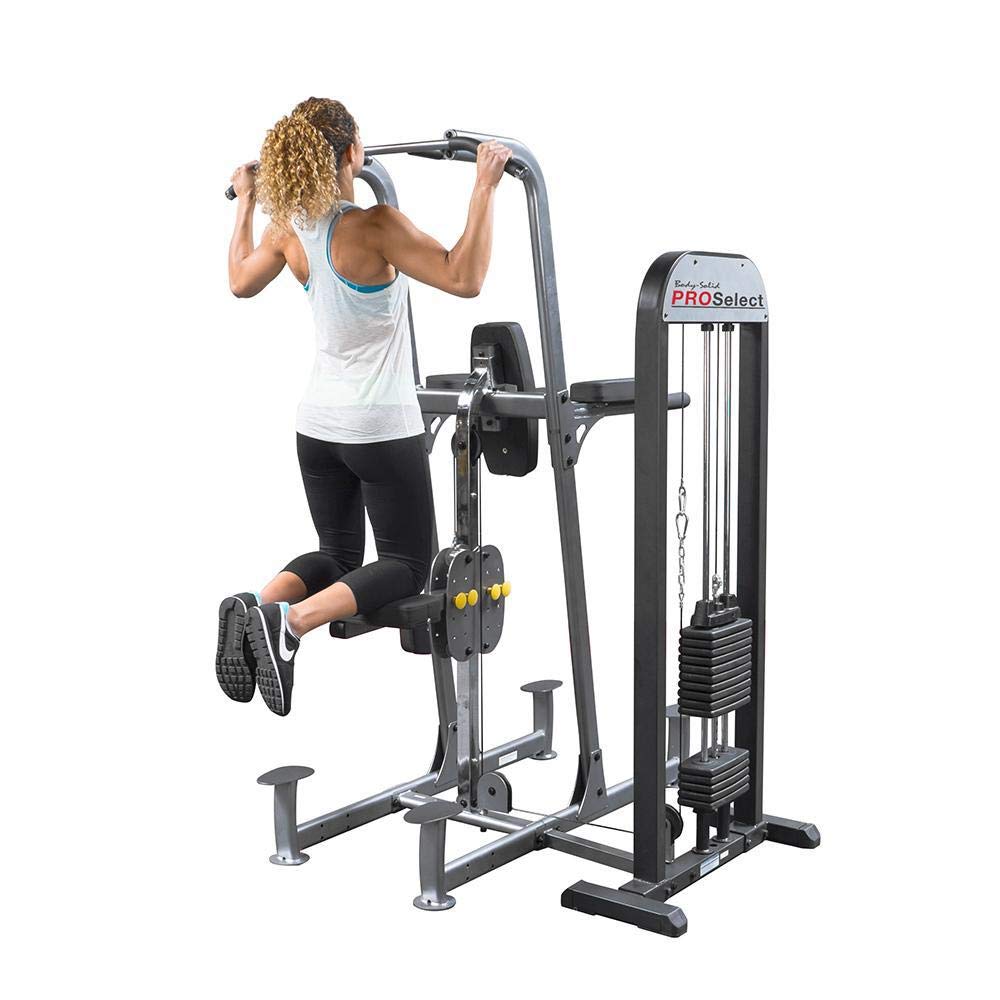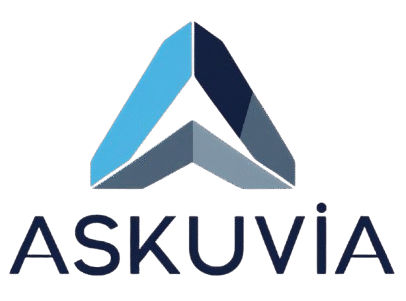An assisted pull up machine is a counterbalanced station that offsets a portion of your body weight so you can perform vertical pulling with strict form. The system uses a weight stack linked to a knee pad or foot platform. More stack equals more assistance. Less stack equals more of your body mass. The line of pull mimics a classic pull-up. The machine also often integrates dip handles for push work. The setup favors beginners, return-to-training lifters, and high-volume technique sessions.

Key Advantages in One View
-
Reduce effective load while preserving the pull-up pattern.
-
Maintain full range with controlled eccentrics and clean scapular mechanics.
-
Accumulate volume without shoulder irritation from kipping or swinging.
-
Track progression in exact numeric steps on the weight stack.
-
Swap grips and handle widths to bias different musculature.
-
Share a single station for assisted pull-ups and assisted dips.
-
Build grip endurance with fixed bars and neutral handles.
Biomechanics Simplified
Pull-ups follow a closed-chain vertical pull. The machine converts part of your body weight into upward counterforce. The prime movers are the latissimus dorsi and elbow flexors. The scapular retractors and depressors stabilize the glenohumeral joint. The trunk resists extension and sway. Proper execution places the humerus in adduction and extension. Elbows track down and slightly forward. The cervical spine remains neutral. The ribcage stays stacked over the pelvis. Control in the eccentric phase produces the largest stimulus for strength.
Primary Muscles
-
Lats (latissimus dorsi).
-
Middle and lower trapezius.
-
Rhomboids.
-
Biceps brachii and brachialis.
-
Posterior deltoid.
-
Core musculature for body tension.
-
Forearm flexors for grip.
Secondary Contributors
-
Teres major for shoulder extension.
-
Rotator cuff for centering the humeral head.
-
Serratus anterior for scapular upward rotation control.
-
Spinal erectors for isometric stiffness.
Machine Variants and Components
Counterweight style: Most commercial units use a vertical stack, pulleys, and a levered knee pad or foot plate.
Dual-function towers: Many rigs combine assisted pull-ups and assisted dips on one frame.
Grip arrays: Straight bar, multi-grip bars, neutral parallel handles, and angled handles.
Adjustability: Weight pin increments (typically 5–15 lb or 2–7 kg steps), pad height detents, and removable dip handles.
Footprint: Commercial towers occupy ~1.0–1.5 m², with ceiling clearance considerations for user height and chin-over-bar space.
Accessories: Step platforms, rubberized pads, knurled bars, and rep counters on premium models.
How to Use an Assisted Pull-Up Machine (Step-By-Step)
Prepare station
-
Sanitize pad and handles.
-
Inspect pin placement and safety lanyard.
-
Confirm stack alignment and cable integrity.
Set assistance
-
Estimate your starting assistance as bodyweight minus target effective load.
-
Choose a setting that enables clean 6–10 reps.
-
Err slightly heavier on assistance for the first set.
Grip bar
-
Select pronated, neutral, or supinated grip.
-
Set width slightly wider than shoulders for classic pull-ups.
-
Center body under the bar to avoid asymmetric loading.
Mount pad
-
Step on side platforms, kneel onto pad with one knee, then the other.
-
Create whole-body tension before letting pad rise.
Execute rep
-
Depress and retract scapulae first.
-
Pull elbows down toward the ribcage.
-
Bring chin to, or slightly above, bar level.
-
Pause briefly at the top to kill momentum.
-
Lower in 2–4 seconds to full elbow extension.
Dismount
-
Return to side platforms.
-
Release one knee at a time.
-
Stand tall before adjusting the pin again.
Grip Choices and Target Emphasis
-
Overhand (pronated): Emphasizes lats and mid-back. Good for shoulder-friendly mechanics.
-
Neutral (palms facing): Reduces wrist strain. Balances lat, biceps, and scapular demands.
-
Underhand (supinated, chin-up): Shifts effort toward elbow flexors. Helpful in early strength phases.
-
Mixed and staggered grips: Useful to break plateaus and manage overuse.
-
Wide grip: Increases lat demand, but reduces ROM for some lifters.
-
Close grip: Increases ROM and biceps involvement.
Programming Essentials
-
Frequency: 1–3 exposures per week, with at least one day between heavy sessions.
-
Volume: Start with 3–4 total sets. Advance to 15–30 total weekly reps in clean form.
-
Tempo: Use controlled eccentrics. Add 2–1–2 or 3–1–2 tempos for technique blocks.
-
Progression: Reduce assistance in small steps once you hit rep targets.
-
Autoregulation: Use RIR (reps in reserve) or RPE to keep sets at 1–3 RIR for skill work.
-
Pairings: Combine with horizontal pulls, anti-extension core work, or scapular control drills.
Progression Roadmap: From Assisted to Bodyweight
Phase 1: Pattern acquisition
-
Assistance: 40–60% bodyweight counterbalanced.
-
Sets × reps: 3–4 × 6–10.
-
Focus: Scapular depression, full ROM, symmetric elbow paths.
Phase 2: Strength consolidation
-
Assistance: 25–40% bodyweight.
-
Sets × reps: 4 × 5–8.
-
Add: 2–4-second eccentrics, short top pauses.
Phase 3: Bridging
-
Assistance: 10–25% bodyweight.
-
Sets × reps: 3–4 × 4–6 + negatives or isometric top holds.
-
Goal: First single strict bodyweight pull-up.
Phase 4: Transition
-
Assistance: minimal or zero.
-
Sets × reps: 3 × 3–5 unassisted.
-
Add: Weighted eccentrics, cluster reps, and grip variants.
Assistance Planning and Milestones
| Body Mass (kg) | Target Effective Load (kg) | Assistance to Select (kg) | Clean Rep Goal | Next Step Trigger |
|---|---|---|---|---|
| 60 | 40 | ~20 | 3×8 | Reduce 2.5–5 kg assistance |
| 70 | 45 | ~25 | 3×8 | Reduce 2.5–5 kg assistance |
| 80 | 50 | ~30 | 4×6 | Reduce 2.5–5 kg assistance |
| 90 | 55 | ~35 | 4×6 | Add 2–3 s eccentrics |
| 100 | 60 | ~40 | 4×5 | Add isometric top holds |
| 110 | 65 | ~45 | 3×6 | Attempt 1–2 unassisted reps |
| 120 | 70 | ~50 | 3×5 | Start mixed sets (BW + assisted) |
Notes: Convert to pounds by multiplying by 2.205. Adjust for bar geometry, fatigue state, and grip choice.
Two High-Yield Lists
Common Mistakes and Corrections
-
Cut range
Correct action: Extend elbows fully. Clear chin at top. -
Swing body
Correct action: Brace core. Pause at the top. Use controlled eccentrics. -
Flare elbows
Correct action: Track elbows 30–45° from the torso. Pack shoulders. -
Neck jutting
Correct action: Keep neutral neck. Pull chest toward bar, not chin only. -
Excess assistance
Correct action: Downshift assistance in small steps once you meet rep targets. -
Grip slip
Correct action: Use full wrap. Chalk hands if allowed. Build endurance with timed hangs. -
Pelvic swing
Correct action: Squeeze glutes lightly. Keep ribcage stacked over pelvis.
Accessory Movements That Transfer
-
Inverted rows (rings or bar): Build mid-back endurance with high control.
-
One-arm cable rows: Address side-to-side imbalances with unilateral loading.
-
Lat prayer pulldowns: Groove scapular depression with a cable arc.
-
Face pulls: Strengthen external rotators and mid-traps.
-
Hollow holds: Train trunk stiffness for better body line on the bar.
-
Farmer carries: Improve grip and scapular positioning under load.
-
Scapular pull-ups: Rehearse the first centimeter of the pull-up with pure depression.
Periodized Sample Plans (Beginner → Intermediate)
Eight-Week Linear Template
Weeks 1–2
-
3 × 8–10 assisted pull-ups (moderate assistance).
-
3 × 12 inverted rows.
-
3 × 30-second hollow holds.
Weeks 3–4
-
4 × 6–8 assisted pull-ups (reduce assistance).
-
3 × 10 one-arm cable rows each side.
-
3 × 12 face pulls.
Weeks 5–6
-
3 × 5–6 assisted pull-ups + 2 negatives.
-
3 × 8 lat prayer pulldowns.
-
3 × 40-meter farmer carries.
Weeks 7–8
-
3 × 4 assisted pull-ups (minimal assistance) + 1–2 unassisted attempts.
-
3 × 8 scapular pull-ups.
-
3 × 20-second top-position isometric holds.
Density-Focused Alternative (Three-Week Wave)
Session A
-
10-minute EMOM: 2–4 assisted reps each minute.
-
3 × 10 ring rows.
Session B
-
5 rounds: 6 assisted reps, 20-second hollow hold, 45-second rest.
-
3 × 12 face pulls.
Session C
-
8 × 3 assisted reps @ slow 3-second eccentric.
-
3 × 30-meter farmer carry.
Progress by trimming assistance one notch when you complete all assigned reps with consistent tempo.
Safety and Setup Best Practices
-
Screen shoulders: Respect any active pain at end-range.
-
Warm up: Include shoulder CARs, band pull-aparts, and light hangs.
-
Select grip: Prioritize pain-free alignment and neutral wrists.
-
Set assistance wisely: Choose the lowest help that preserves perfect reps.
-
Manage hygiene: Clean pads and bars before and after use.
-
Observe etiquette: Alternate sets on busy towers. Replace pins correctly.
-
Log sessions: Track assistance number, grip, sets, reps, and RIR.
Equipment Buying Notes (For Home and Boutique Gyms)
-
Load range: Prefer full stacks with fine-grained increments for precise progression.
-
Frame stability: Check floor anchors, welds, gussets, and max user weight.
-
Handle diversity: Seek neutral and angled grips.
-
Serviceability: Favor brands with accessible pulleys, cables, and wear parts.
-
Ceiling height: Measure clearance for tallest users with chin above bar.
-
Footprint: Map traffic flow so users can safely mount and dismount.
-
Warranty and parts: Confirm cable replacement timelines and availability.
Troubleshooting Plateau Scenarios
Case 1: Stuck at the same assistance
-
Add slow eccentrics and 2-second top holds.
-
Introduce unilateral rows to address asymmetry.
-
Improve grip with timed dead hangs.
Case 2: Elbow irritation
-
Switch to neutral grip and slightly closer width.
-
Reduce eccentric speed and total weekly volume.
-
Add soft-tissue work for forearm flexors.
Case 3: Shoulder pinch at top
-
Emphasize scapular depression before pulling.
-
Use isometric holds just below problematic range.
-
Strengthen lower traps and serratus with wall slides.
Case 4: Grip fails first
-
Use chalk if permitted.
-
Rotate to thicker neutral handles for short intervals.
-
Train farmer carries and towel grip rows.
Advanced Overload Options
-
Cluster reps: 2-2-2 with 15-second intra-set rest at lower assistance.
-
Tempo ladders: 2-second eccentrics → 3-second eccentrics → 4-second eccentrics across weeks.
-
Range blocks: Bottom-half reps for start strength; top-half reps for peak finish.
-
Mixed sets: One unassisted single followed by assisted volume.
-
Density tests: Max clean reps in 5 minutes at a fixed assistance number.
Coaching Cues That Produce Fast Wins
-
“Drive elbows to ribs.” Guides shoulder extension with less shrug.
-
“Crush the bar.” Increases irradiation and core tension.
-
“Chest to bar, neck neutral.” Prevents cervical extension cheats.
-
“Exhale through the sticking point.” Reduces breath holds and sway.
-
“Own the lowering.” Places stimulus where most lifters need it.
Recovery and Adaptation
-
Rest intervals: 90–150 seconds between hard sets.
-
Volume control: Cap total sets if technique degrades.
-
Soft tissue: Forearm flexor massage, posterior shoulder work, and lats.
-
Mobility: Thoracic extension drills and scapular CARs for range.
-
Sleep and protein: Support connective tissue recovery and grip gains.
FAQs
Which grip builds the first pull-up fastest?
Neutral or underhand often allows higher reps early due to biceps leverage. Overhand becomes crucial later for transfer to classic pull-ups.
How do I pick a starting assistance number?
Subtract a manageable effective load from your body mass. Target a setting where 6–10 strict reps are possible with 1–3 RIR.
Do assisted pull-ups build the lats as well as pulldowns?
Yes, when form is strict and eccentrics are controlled. Closed-chain alignment matches the motor pattern of a true pull-up.
What weekly frequency drives progress without pain?
Two exposures per week works for most lifters. A light technical day plus a slightly heavier day balances skill and stimulus.
Can I use straps on the machine?
Yes, if rules allow. Straps remove grip as the limiter. Rotate off straps to build hand strength for real-world carryover.
Is kipping useful on the assisted station?
No. The counterweight changes timing and joint loading. Strict mechanics deliver safer, repeatable progress.
Why do my elbows ache after volume blocks?
Common cause is excessive supinated work or high total eccentric load. Rotate in neutral grips and reduce weekly volume for 1–2 weeks.
How do I bridge from assisted triples to bodyweight singles?
Use clusters at minimal assistance, add top holds, and test a single rep when RIR is positive on all cluster segments.
Do isometric holds actually help?
Yes. Short top-position holds improve scapular control and finishing strength. Combine with slow lowering for best transfer.
Does machine brand matter for progress?
Any stable tower with consistent increments works. Handle variety, smooth pulley action, and reliable stack markings make tracking easier.
Can I pair assisted pull-ups with dips in one session?
Yes. Alternate sets if the tower supports both. Keep reps shy of failure to preserve shoulder integrity across both planes.
What if the machine is busy?
Use band-assisted pull-ups, eccentric pull-ups, or kneeling lat pulldowns. Keep the same grips and tempo to maintain the pattern.
Content Recap for Skimmers
-
Use enough assistance to execute strict 6–10 reps.
-
Lower with control for 2–4 seconds each rep.
-
Reduce assistance in small steps across weeks.
-
Rotate grips to manage elbows and wrists.
-
Add holds, negatives, and density blocks when progress stalls.
-
Track assistance number, reps, RIR, and grip every session.
Bonus: Template Log Page (Copy-Ready Fields)
-
Date / Session:
-
Bodyweight:
-
Grip / Width:
-
Assistance Number:
-
Sets × Reps:
-
Tempo / Holds:
-
RIR per set:
-
Accessories performed:
-
Notes on pain, form, or fatigue:
-
Next-session change (assistance −2.5 kg, add 1 s eccentric, new grip)
Learn More: This Too Shall Pass: Meaning, Origin, and Timeless Relevance
Hotels with Jacuzzi in Room in: Ultimate 2025 Guide for Luxury, Comfort & Romance
Conclusion
An assisted pull up machine enables strict vertical pulling when bodyweight strength is not yet sufficient. The counterweight system preserves the pattern while letting you grade the load in precise steps. Clean form, controlled eccentrics, careful grip selection, and incremental assistance reduction create reliable gains. Pair the machine with targeted accessories, rotate grips to manage stress, and log details to keep progress visible. Master these variables, and your path from assisted reps to confident unassisted pull-ups becomes a clear, trackable process.

